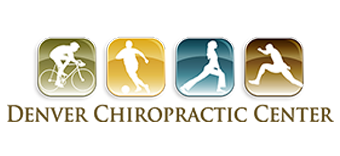In last month’s Health Update, we discussed fibromyalgia (FM) management from a multi-modal approach, which included dietary recommendations to reduce inflammation. We’ll cover this topic in more detail this month…
Anti-inflammatory foods can be broken down into four categories: 1) Fruits and vegetables; 2) Protein Sources; 3) Fats and Oils; and 4) Beverages.
In the fruits and vegetables category, whole fruits, berries, and vegetables in general are rich in good things like vitamins, minerals, fiber, anti-oxidants, and phytochemicals. In particular, green and brightly colored vegetables and whole foods (such as broccoli, chard, strawberries, blueberries, spinach, carrots, and squash) are great choices.
Besides being low in calories, high in fiber, rich in vitamin/minerals and more, berries EVEN taste good! For example, one cup of strawberries contains >100mg of vitamin C (similar to a cup of orange juice), which helps our immune system function. One cup of blueberries includes a little less vitamin C but it has minerals, phytochemicals, and anti-oxidants at only 83 calories per cup. A cup of cranberries has only 44 calories (it can also help with bladder infections), and a cup of raspberries has 64 calories and has vitamin C and potassium. Less common, but equally nutritious, are loganberries, currants, gooseberries, lingonberries, and bilberries. Put these, or a mixture of these, on salads, yogurt, or a whole grain cereal and enjoy a VERY satisfying snack or meal! The health benefits of phytochemicals and flavonoids include cancer prevention, bladder infection treatment, and may even help your eyesight (such as from lutein in blueberries and raspberries).
Protein sources include fish/seafood, especially oily ocean fish like salmon and tuna, as these are rich in omega-3 fatty acids. Soy and soy foods like tofu and tempeh as well as legumes are great plant sources of protein, though some doctors may recommend staying away from soy. Nuts such as walnuts, almonds, pecans, and Brazil nuts are also great protein sources.
Fats and Oils: Omega-3 fatty acids can be found in flax seeds, canola oil, and pumpkin seeds, as well as cold-water oily fish. Other fats that are anti-inflammatory include monounsaturated fatty acids, which are found in olive oil, avocados, and nuts and have been found to be cardiovascular disease “friendly” as well. Other healthy oils include rice bran oil, grape seed oil, and walnut oil.
Beverages: Our bodies need water! Of course, tap, sparkling, or bottled water are great sources of water. So are 100% juices, herbal tea, low-sodium vegetable juice, and if tolerated, low or non-fat milk.
Meal suggestions include: Breakfast – oatmeal with fresh berries and walnuts; Snacks – whole fruits, nuts, seeds, and fresh vegetables; Lunch and Dinner– choose fish and less fatty red meats; cook with olive and canola oil; load up a salad with fresh vegetables and fruit, avoid deep fried foods – rather, bake, broil, poach, or stir-fry instead. Fill up HALF of your dinner plate with dark green or brightly colored vegetables. Avoid the following: junk food, high-fat meats, sugar (sodas, pastries, candy, rich desserts, and sweetened cereals), highly processed foods, trans-fats and saturated fats (i.e., bacon and sausage), and white flour products (get 100% whole grain instead). Some research suggests not eating “nightshade plants” like tomatoes and eggplant.
If you, a friend or family member requires care for Fibromyalgia, we sincerely appreciate the trust and confidence shown by choosing Denver Chiropractic Center. 303.300.0424.
